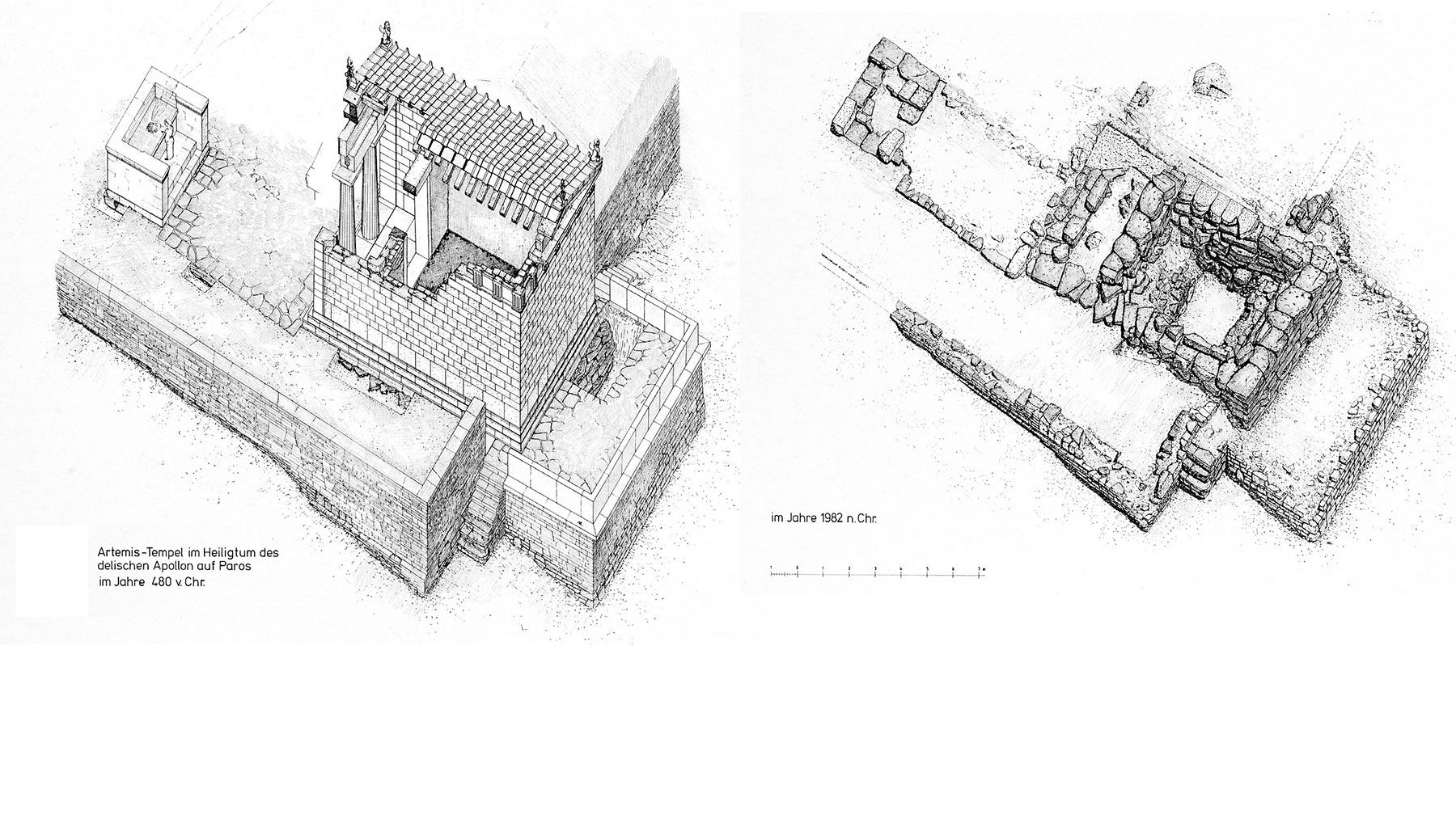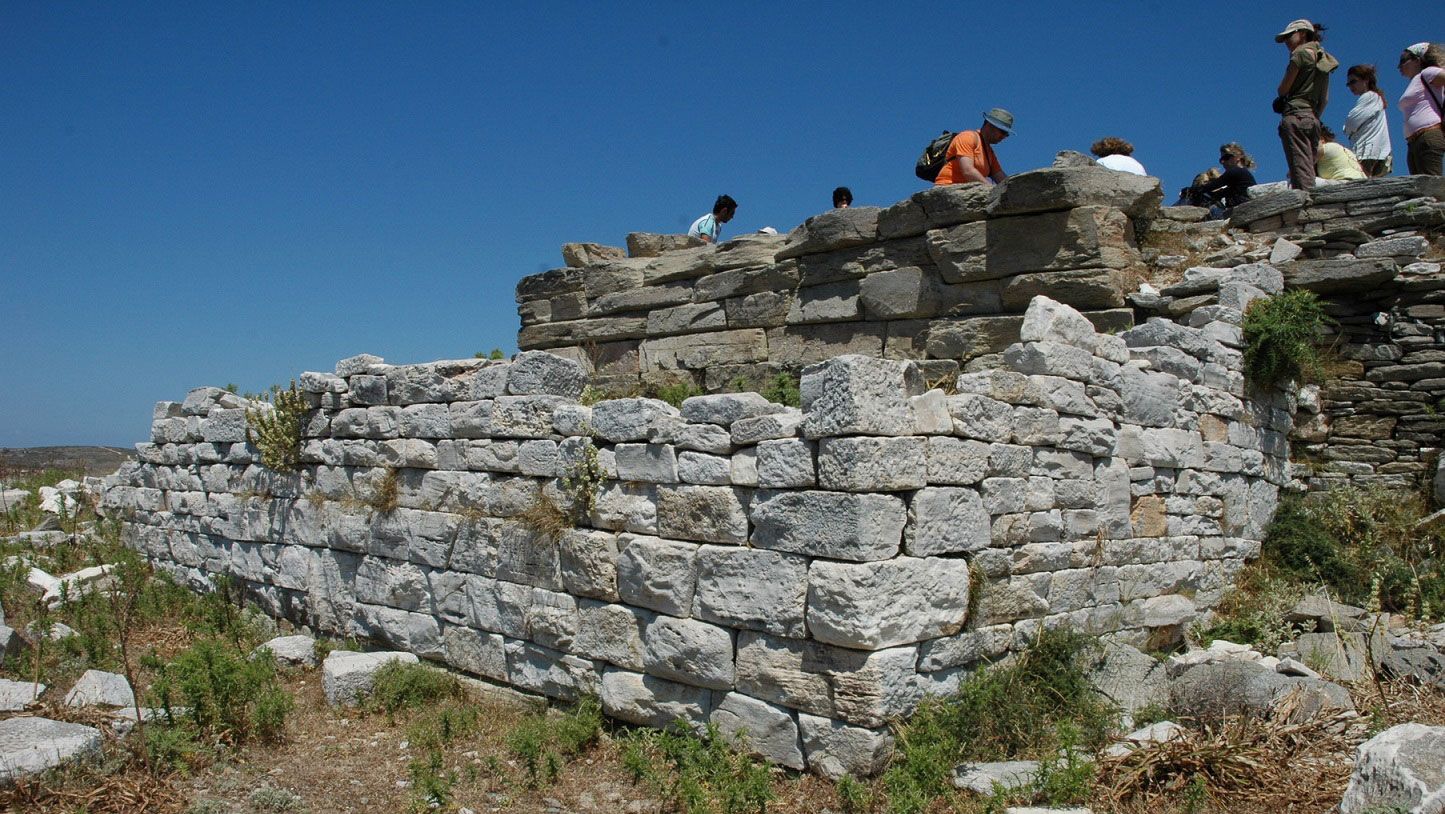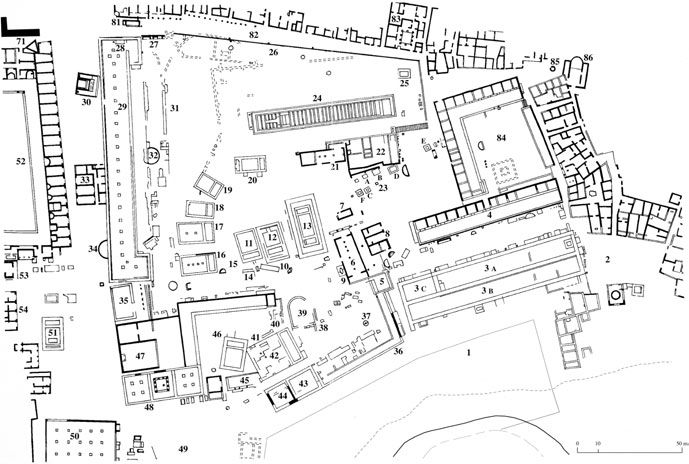Delion Sanctuary: In the Footsteps of Ancient Worship
Located on Mount Kynthos, as it was named in antiquity, less than 4 km north of the city of Parikia, the sanctuary offers a direct line of sight to the island of Delos, a significant spiritual centre in the ancient world.

The earliest evidence of cultic activity at the Delion dates back to the Early Archaic period (700 BC). The sanctuary was dedicated to the worship of Delian Apollo and Artemis, twin deities revered in the ancient Greek pantheon. The site flourished from the Archaic period onwards, with the first excavations conducted in 1899 by O. Rubensohn. His findings and those of N. Zapheiropoulos of the Greek Archaeological Service in 1961 revealed a lively cultic use of the site already in the Late Geometric period (760-700 BC).
The sanctuary was characterized by diverse votive offerings, including pottery, small finds, and a possible late 8th-century building. The focal point of the early cult practices was a rock altar, around which gatherings and dances were held in honour of the venerated deities. The discovery of a Late Geometric stone pendant representing the dance of géranos supports this assumption.
The nature of the Geometric and early Archaic votive offerings was quite heterogeneous, suggesting the presence of both a male and a female deity from the 7th century onwards. The presence of seals, jewellery, beads of glass and other stones, and terracotta female figurines indicate the cult of a female deity, while miniature shields and representations of warriors suggest the presence of a male deity.
The Delion underwent significant monumentalization during the Late Archaic period (480 BC). A Doric temple dedicated to Artemis was erected on the northwest side of the sanctuary. This temple, built over a gneiss foundation, is the most ancient canonical Doric temple in the Cyclades. It featured a cellar (where the statue of the god is located in a temple) and pronaos (space preceding the temple) with two columns on the porch, offering direct views of the island of Delos. The temple also housed a colossal statue of Artemis, dating to 490-480 BC, which is today housed in the Archaeological Museum of Paros.


One of the most significant structures of this temple was a balcony, which offered views towards Delos. It is believed that this structure was used to communicate with Delos through the sending of signals. The deposit of the sanctuary found beneath the cella of the temple revealed a vast array of ex-votos (votive offerings made to a god), including an offering table, clay statues, items believed to be apotropaic, such as seals and clay body parts, female statuettes, jewellery, fibulas, protomes, grotesque masks, and even objects that may have been used in magic rituals, such as small clay models of human body parts.

The Delion sanctuary on Paros, with its rich history and significant archaeological findings, offers a fascinating glimpse into the ancient Greek world's religious practices and cultural dynamics. Its enduring legacy continues to captivate scholars and visitors alike, making it a must-visit site for anyone interested in exploring the rich tapestry of ancient Greek history.
Students and faculty of the IUPUI School of Informatics and Computing produced this documentary during their Study Abroad Trip to Paros, Greece in 2017.








